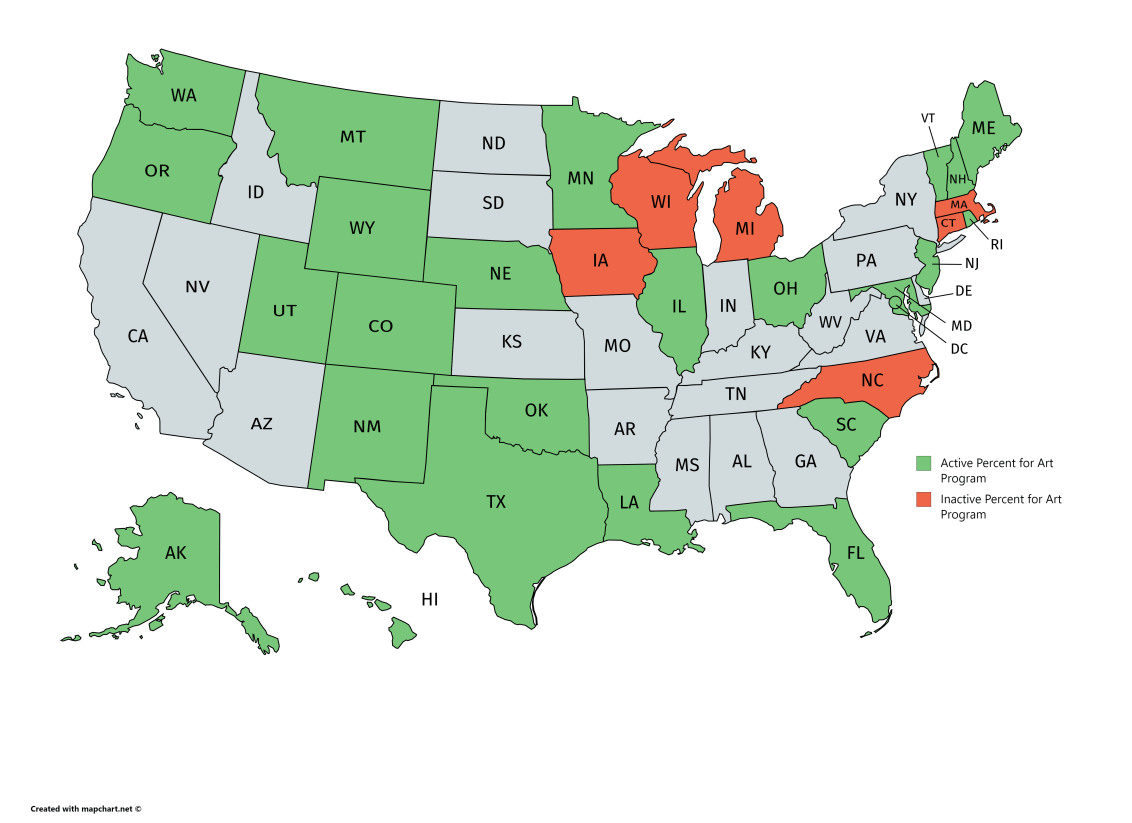
Image of Riverpoint Observatory by Patrick Zentz (2002)
There are currently 26 active state percent for art programs in the United States. Additionally, there are 6 programs that either were previously active (North Carolina, Wisconsin, Iowa, Connecticut, Michigan) or have yet to be funded (Massachusetts). Percent for Art programs began to formally emerge in the late 1960s, with the creation of the National Endowment for the Art's Art in Public Places Program in 1967, which over 28 years (until 1995), "provided matching grants for community-initiated public art projects," funding over 700 works of art across the country (Daugherty, North Carolina Arts Council, p. 36). Hawaii's percent for the art program, Art in Public Places, also began in 1967, the first and oldest state program of its kind in the nation. These programs have established a template for appropriating small percentages (0.5 - 1.5%) of construction and renovation budgets to fund the creation, acquisition, installation, and maintainance of public artworks at public sites (i.e. schools, agencies, transit stations) at the city, state, and federal-level. Many cities (ex: Boston, Los Angeles, New York City) as well as higher education institutions (ex: MIT, Brown University, and public institutions in the Texas system) have created their own, local percent for art programs.
The timeline below outlines the emergence of state percent for the art programs from 1967 to the present. These programs emerged most rapidly in the late 1970s and steadily throughout the 1980s, "spurred on by the federally sponsored Art in Public Places Program started in 1967 at the National Endowment for the Arts ... [and] the Art in Architecture Program of the General Services Administration, another federally funded public art program started in 1972, [which] continues to commission artwork for federal buildings across the country" (Daugherty, North Carolina Arts Council, p. 36). A map highlighting the states with with active (green) and inactive (red/orange) programs is included above the timeline for reference [Note: Guam is not visualized on this map, but has an active and robust percent for the art program).
